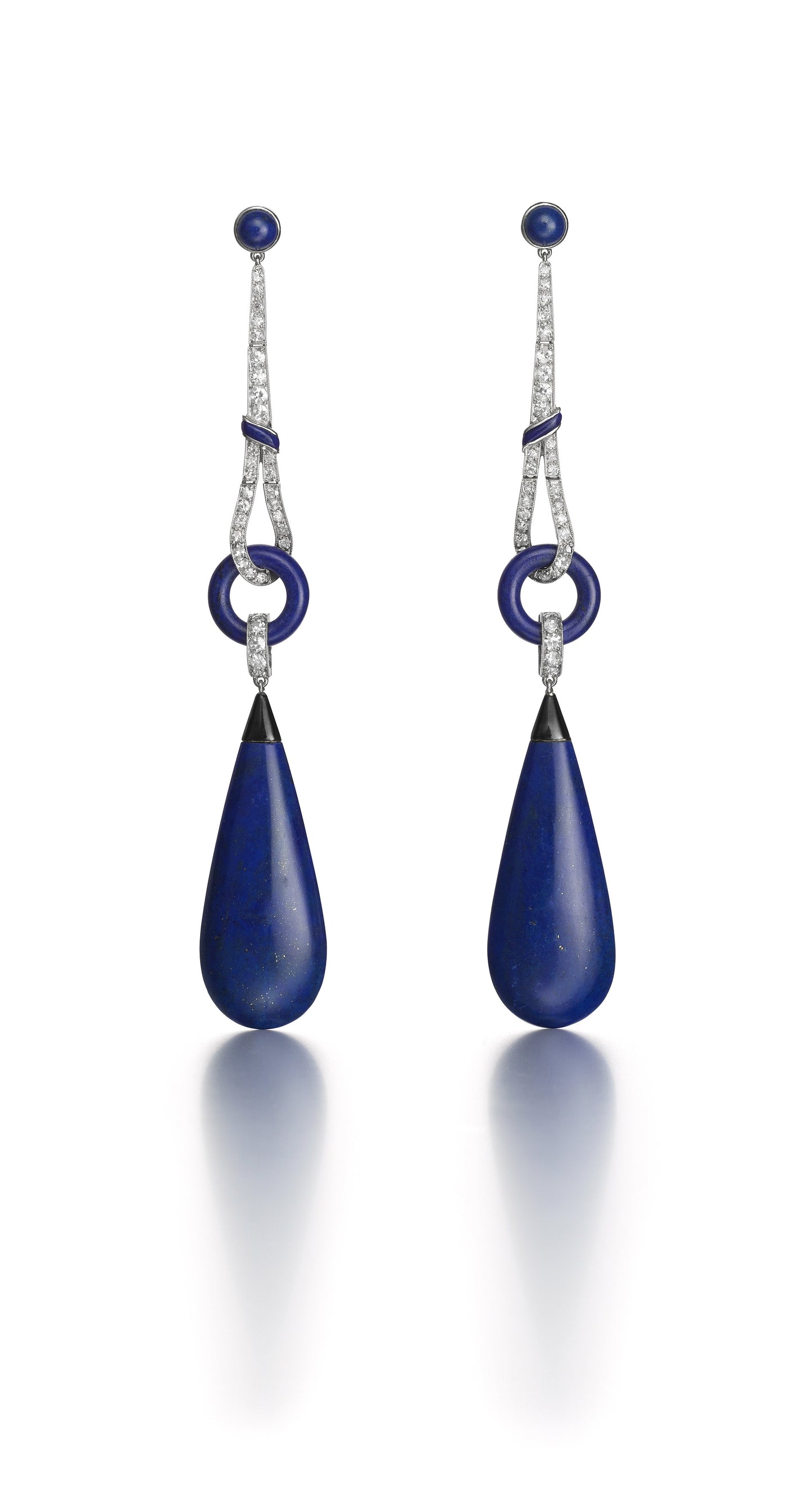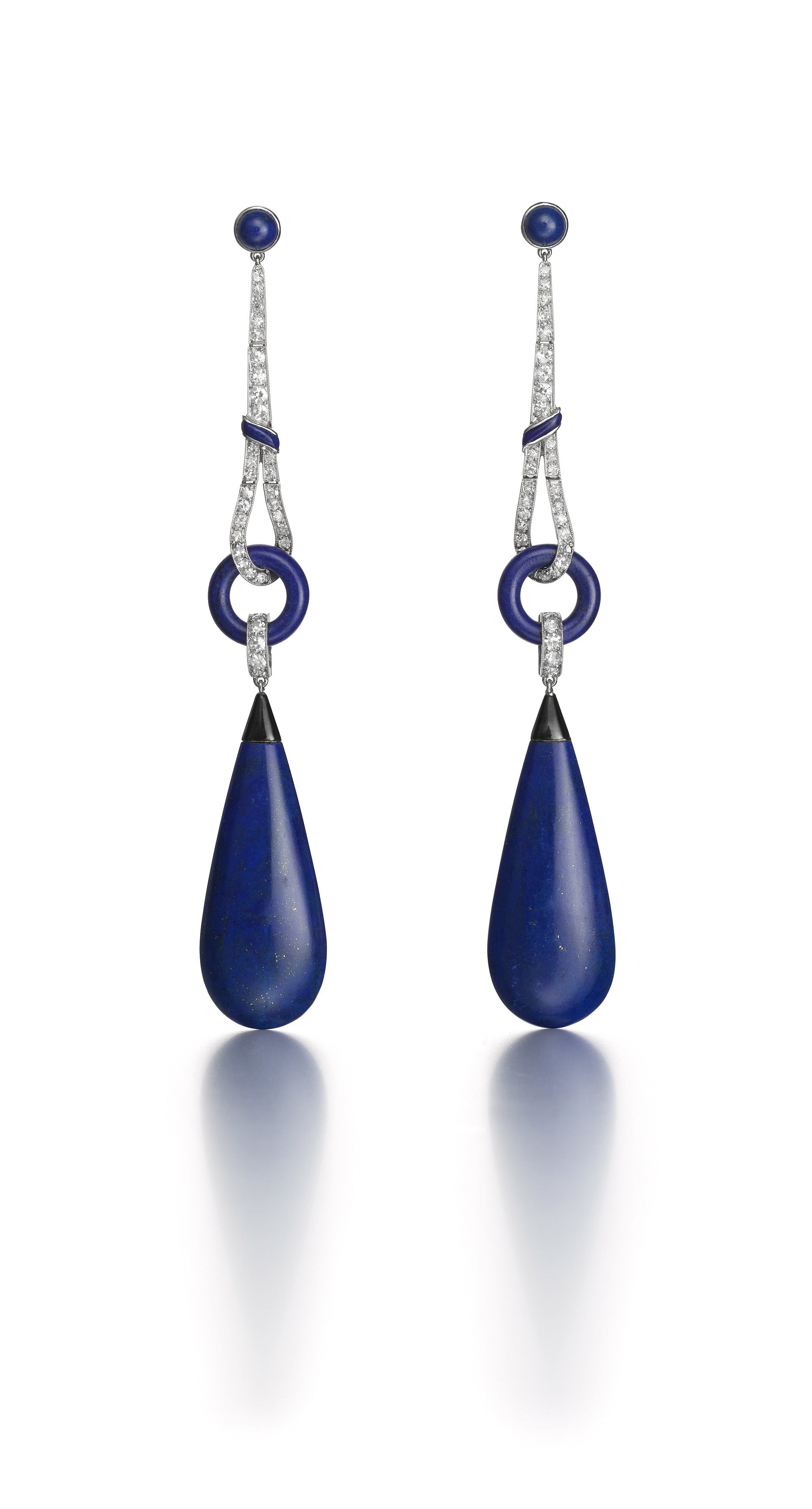PAIR OF ART DECO PLATINUM, LAPIS LAZULI, DIAMOND, AND ENAMEL PENDANT EARRINGS BY BOUCHERON, PARIS, CIRCA 1925
PAIR OF ART DECO PLATINUM, LAPIS LAZULI, DIAMOND, AND ENAMEL PENDANT EARRINGS BY BOUCHERON, PARIS, CIRCA 1925
SOLD
A pair of earrings suspending pear-shape lapis lazuli drops capped by black enamel, connected to lapis lazuli rings by articulated platinum and diamond segments with single-cut diamonds and enamel detail, the tops set with lapis lazuli cabochons; mounted in platinum
- 2 pear-shape lapis lazuli
- 2 lapis lazuli rings
- 2 lapis lazuli cabochons
- 64 single-cut diamonds
- Signed Boucheron, Paris with maker’s marks
- Length: 3 1/4 inches
Additional cataloguing
Biography
Frédéric Boucheron opened his Paris jewelry salon in 1858 at the Palais Royal. In 1893, Boucheron was the first jeweler to move to Place Vendôme, at number 26, where they still operate today. From the beginning, Boucheron was known for groundbreaking work. His creativity, and that of his son Louis, earned accolades at international exhibitions including the 1867 Paris Universal Exposition, the 1893 World’s Columbian Exposition in Chicago, and the 1925 Paris Exposition des Arts Décoratifs et Industriels Modernes. The house remained in the family until acquired by Gucci Group in 2000. Today, Boucheron has 34 shops around the globe selling perfume, watches, and jewelry.
Significance
In the 1920s, clothing elongated the silhouette, hair was cropped short, and movement was about swaying. It was a time of change, when the past was regarded as passé and the future looked bright. New times necessitated new fashions with ladies of society wanting the latest couturier designs accessorized with modern jewelry. Sergei Diaghilev’s Ballets Russes had made an impact in Paris and London beginning in 1909 and influenced a bright color palette in art, fashion, and jewelry. Emeralds, rubies, sapphires, onyx, coral, and lapis lazuli were the gemstones of choice, the latter frequently carved into cylinders, circles, and panels.
The vertical emphasis of fashion dictated a new bobbed hairstyle, the Eton crop, a short slicked-down cut worn by Josephine Baker and Louise Brooks, which accommodated the bell-shaped cloche. With ears exposed, a new look for earrings was created in marked contrast to the cluster and pendant designs of the first two decades of the twentieth century. The low-cut, short-hem, drop-waist dresses accentuated long, dangling pendant earrings.
These earrings by Boucheron exemplify a new direction. Lapis lazuli defines the pear-shape pendants, rings, ribbon-like ties and studs in contrast to the stark white diamonds. A subtle but important detail, black enamel caps on the pendant lapis lazuli drops, defines these earrings as remarkable. These earrings epitomize the new woman, known as the Flapper, who was described by Zelda Fitzgerald in 1922, as a woman who “. . . bobbed her hair . . . put on her choicest pair of earrings, and a great deal of audacity and rouge and went into battle.” These earrings are just as remarkable and wearable today as they were when they were made.



